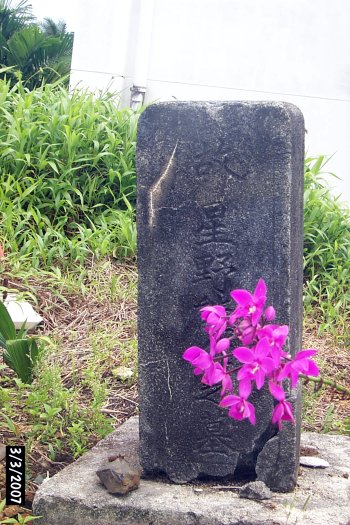 26 February 2009. What was the Haruki experiment and what was the intent of the Japanese?
26 February 2009. What was the Haruki experiment and what was the intent of the Japanese?
- _____ awl
- _____ cordate
- _____ lanceolate
- _____ lobed, pinnate
- _____ obovate
- _____ palmate
- _____ peltate
 26 February 2009. What was the Haruki experiment and what was the intent of the Japanese?
26 February 2009. What was the Haruki experiment and what was the intent of the Japanese?
01 April 2009. Founding Day in odd numbered years provides a rare opportunity for students to display their material culture.
Which Founding Day group best displayed their material culture?
Do not just name a group. Explain WHY you think that group best displayed their material culture.
To the best of your ability use correct grammar and spelling. Write a well-formed essay including an introductory paragraph, at least two to three body paragraphs, and a concluding paragraph. Use specific examples. Provide evidence for assertions.
The essay will be marked using the rubric provided.
Essay continued
| Syntax | |
|---|---|
| 5 | No errors of grammar or word order. |
| 4 | Some errors of grammar or word order but communication not impaired. |
| 3 | Errors of grammar or word order fairly frequent; occasional re-reading necessary for full comprehension. |
| 2 | Errors of grammar or word order frequent; efforts of interpretation sometimes required on reader's part. |
| 1 | Errors of grammar or word order very frequent; reader often has to rely on own interpretation. |
| 0 | Errors of grammar or word order so severe as to make comprehension virtually impossible. |
| Vocabulary | |
| 5 | Appropriate terms used consistently, clear command of vocabulary, no misspelled words. |
| 4 | Occasionally uses inappropriate terms or relies on circumlocution; expression of ideas not impaired; or a few misspelled words. |
| 3 | Uses wrong or inappropriate words fairly frequently; expression of ideas may be limited because of inadequate vocabulary. |
| 2 | Limited vocabulary and frequent errors clearly hinder expression of ideas. |
| 1 | Vocabulary so limited and so frequently misused that reader must often rely on own interpretation. |
| 0 | Vocabulary limitations so extreme as to make comprehension virtually impossible. |
| Organization | |
| 5 | Material exceptionally well organized and connected including introduction, body, and conclusion structure. |
| 4 | Material well organized; structure could occasionally be clearer but communication not impaired. |
| 3 | Some lack of organization; re-reading required for clarification of ideas. Missing structures such as an introduction or conclusion. |
| 2 | Little or no attempt at connectivity, though reader can deduce some organization. Missing two or more parts structures such as the introduction and conclusion. |
| 1 | Individual ideas may be clear, but very difficult to deduce connection between them. |
| 0 | Lack of organization so severe that communication is seriously impaired. |
| Cohesion | |
| 5 | Consistent choices in cohesive structures. Ideas flow logically within the body and reflect the introduction. Essay remains on topic. Connector words assist the reader. |
| 4 | Occasional lack of consistency in choice of cohesive structures and vocabulary but overall ease of communication not impaired. |
| 3 | 'Patchy', with some cohesive structures or vocabulary items noticeably inappropriate to general style. Ideas tend to be disconnected from each other. Reads more like an outline than a coherent essay. |
| 2 | Cohesive structures or vocabulary items sometimes not only inappropriate but also misused; little sense of ease of communication. |
| 1 | Communication often impaired by completely inappropriate or misused cohesive structures or vocabulary items. |
| 0 | A 'hodgepodge' of half-learned misused cohesive structures and vocabulary items rendering communication almost impossible. |
| Content | |
| 10 | Fully complete and thorough answer to the task set. Addresses the areas required in the essay description. Content coverage is excellent. |
| 8 | Relevant and adequate answer to the task set with only a single gap or missing task item. |
| 6 | For the most part answers the tasks set, though there may be some gaps or redundant information. |
| 4 | Answer of limited relevance to the task set. Possibly major gaps in treatment of topic and/or pointless repetition. |
| 2 | The answer bears almost no relation to the task set. Inadequate answer. |
| 0 | No evidence of assigned task. |
| Handwritten penmanship | |
| 5 | Exemplary near perfect penmanship, letters on the line, correctly formed letters, even and appropriate spacing between letters and words, legible. |
| 4 | A few inconsistencies in spacing and letter formation, penmanship is neat. |
| 3 | Frequent errors in spacing or letter formation, some difficulties in reading due to legibility. |
| 2 | Substantive, frequent errors in spacing, letter formation. Difficult to read, penmanship problematic but still decipherable. |
| 1 | Penmanship errors so fundamental and pervasive as to render the essay almost unreadable and incomprehensible. | 0 | Illegible scrawl. |